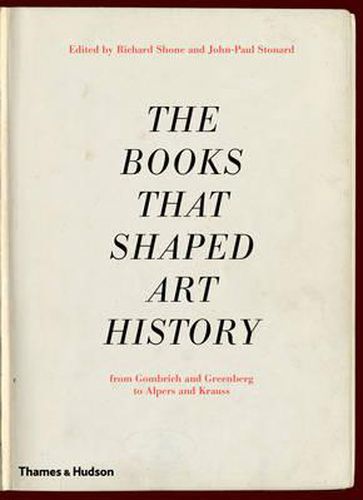Readings Newsletter
Become a Readings Member to make your shopping experience even easier.
Sign in or sign up for free!
You’re not far away from qualifying for FREE standard shipping within Australia
You’ve qualified for FREE standard shipping within Australia
The cart is loading…






$9.00 standard shipping within Australia
FREE standard shipping within Australia for orders over $100.00
Express & International shipping calculated at checkout
Whereas many books introducing art history do so from the perspective of theories and methods, the points of embarkation for this volume are rather the landmark publications that have shaped the subject, as well as the personalities and stories behind those contributions.
John-Paul Stonard, Introduction
I was excited about this new volume from the moment I first saw the publisher’s description and I don’t think I read one sentence that I wasn’t engaged with, from the preface to the author biographies at the back.
The collection of 16 essays begins before Gombrich with Emile Male’s L’art religieux du XIIIe siecle en France, and all but one are originally from The Burlington Magazine, which should give you a good idea of their scope and quality. The approach Stonard outlines in the introduction is excellent because it informs on several different levels: the content of the books, the authors whose achievements were all outstanding, the historical and cultural importance within the context of the works, and the experts in each field who elucidate their subjects so meaningfully.
The chapter on Kenneth Clark’s The Nude is a good example. Times have changed much since its publication “…yet to criticise Clark for separating the nude ‘from discourses about power and, ironically, the politics governing differences of class, gender and race’, is to be guilty of the ‘immense condescension of posterity’…” Once a title booksellers were asked for on a regular basis, it’s now great to see it discussed in its historical context, alongside Clark’s other achievements such as the television series Civilisation. It will also clarify (if necessary) the title of a recent book on the nude in art in more recent times: The Naked Nude by Frances Borzello.
For my generation I feel it’s hard to exaggerate the influence of Rosalind Krauss’ The Originality of the Avant-Garde, nor the far-reaching Clement Greenberg. I now look forward to chasing up the authors of these two chapters, particularly Boris Groy. His essay on Clement Greenberg talks about changes in art in the 21st century: ‘…two developments have led to this change. One is the emergence of new technical means of image production and distribution, the other is a shift in our understanding of art, a change of the rules used for the identification of what is and what is not art. Contemporary art has thus become a mass cultural practice.”
I’m inclined to think there is much to this view and this is why this book is essential. You may or may not be inclined to read one (or even all!) of the ground-breaking works mentioned but it’s fascinating to follow the developments and changes in the discipline. In doing so, you will glean some idea of the how and what of changing approaches to art history and contemporary art discourses.
Have a look at our collection,